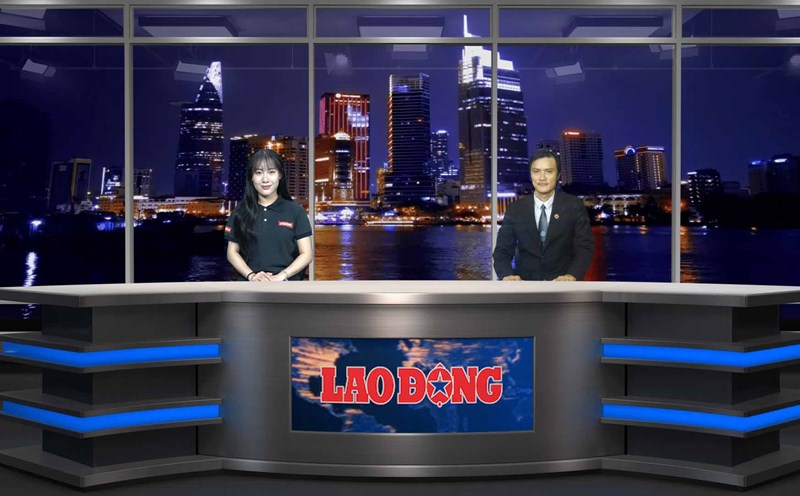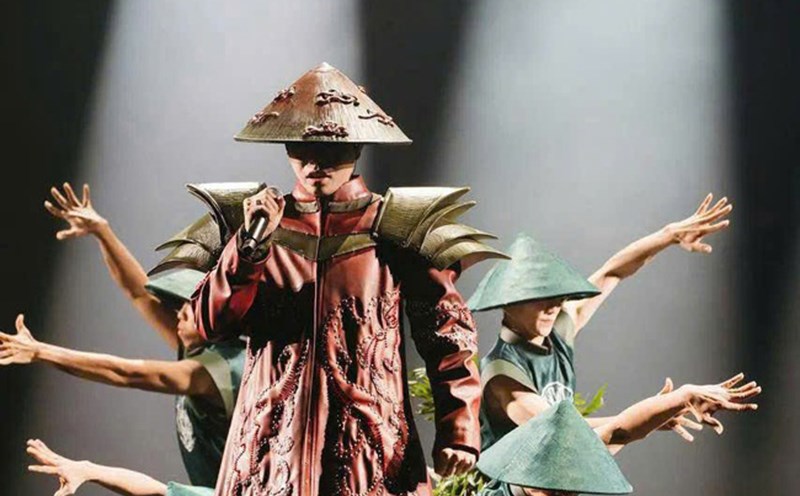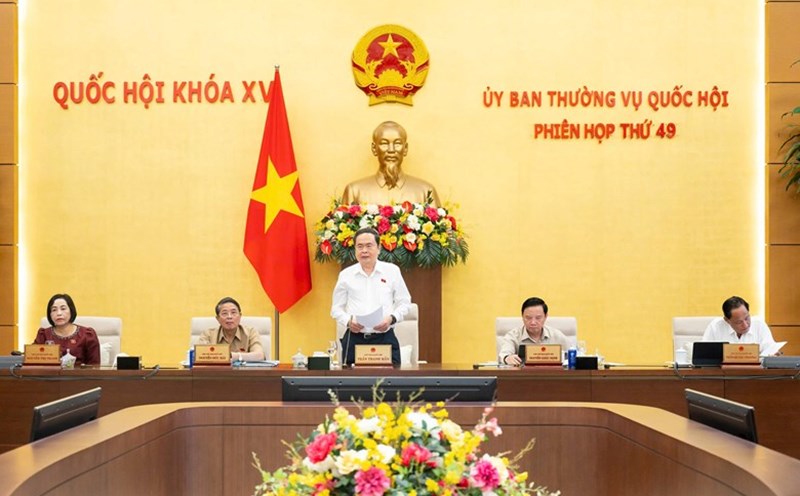From soft, graceful Au boy dance, rustic folk songs, to the sacred Xen cung festival or rituals in life... all are being passed down by the Kho Mu community through generations, contributing to beautifying the colorful cultural picture of the Northwest mountains and forests.
Unique cultural colors in the midst of a thousand
The Kho Mu community in Son La has about 16,500 people, living mainly in mountainous communes and villages in the Song Ma, Muong La, Thuan Chau, Mai Son, Sop Cop, Yen Chau areas...
One of the unique features in the artistic culture of the Kho Mu people is the Au boy dance - also known as the hip shaking dance. This dance simulates daily labor movements such as harvesting rice, growing corn, picking vegetables, scooping shrimp... Each soft but decisive move shows the harmony between people and nature, between individuals and the community. Au boy dance is not only a cultural symbol but also a bridge connecting generations.
Kho Mu women stand out with traditional costumes that are different from other ethnic groups. The pieu scarves are embroidered with colorful patterns, wrapped upside down to reveal the pattern behind the neck. The black dress has a row of large rectangular silver chrysanthemums, the sides of the dress are decorated with colorful silver coins and pearls, expressing the wish for prosperity and luck.
Mr. Lo Van On - a prestigious person in Phieng Nong village, the old Nong Lay commune (now Chieng La commune) - shared: "Pieu scarves and ao dai are not only costumes but also the soul of culture. When the women performed the Au boy dance, the pieu scarf flew along the dance, carrying the entire aspiration of the Kho Mu people for a warm and fulfilling life".
In addition to traditional dance, the Kho Mu people also preserve many folk musical instruments such as flute, drum, and multi-tinged flute, especially monkey gong (bamboo flute) - a type of musical instrument made from 3 bamboo tubes arranged vertically, when playing, it makes ear-pleasing sounds, used as a cushion for songs and dances.
Kho Mu cuisine also has its own mark with Doong Uong soup cooked from buffalo meat, beef stewed with wild vegetables, cakes; or dishes such as five-color sticky rice, Lam com, sour bamboo shoots, all with rich mountain and forest flavors.
The Kho Mu people still preserve the custom of worshiping their ancestors and grandparents. On the rice basket, bamboo pipes containing water or the bones of the pig's jaw are sacred objects, symbolizing the solidarity between generations. Life-cycle rituals, from naming, begging, spirit burial to seasonal festivals, are still held regularly.
In particular, the Xen cung festival (rectory) is the biggest community ceremony of the year for the Kho Mu people. The ceremony is held in the third lunar month, when people are preparing to enter the sowing season. The ceremony started early in the morning. The whole village is concentrated in two high-altitude areas at the beginning of the village and the end of the village. The offerings include: Oil, ribs, legs, liver, pig heart; rooster chicken, live duck; dog meat; wine, sticky rice, fruits and the clothes of each family member, kept in a brocade woven bag.
The monk presided over the ceremony, inviting the gods who ruled the mountains, forests, rivers, streams, rice fields and ancestral souls to receive the ceremony, giving the village a happy and bumper harvest. After the ceremony, there is a festival with folk games such as: Pushing sticks, Throwing con, pulling, along with dances, traditional songs resounding bustlingly, connecting the community.
Mr. Me Van Hung - a prestigious person of Phieng Trai village, Mai Son commune - said: "In the past, the Xen cung festival was held for 2-3 days, now it is simplified but still maintains the main and meaningful procedures. This is an opportunity for people to stick together and pray for a favorable new crop and for the people to be safe.

passed on the cultural flame through each generation
Amidst the flow of integration, the Kho Mu people still persistently teach traditional cultural values to the younger generation. From dances, folk melodies to language, musical instruments are maintained in different ways.
In Cang On village, Sop Cop commune, every year, people organize a sweet potato and crop potato ceremony at the end of December. The offerings include boiled chicken, sweet potatoes, Brazil and other fruits, praying for a year of favorable weather and a good crop.
The village also established an art troupe with 10 members, regularly practicing, performing Au boy dance, singing Kho Mu folk song at festivals or cultural exchanges.
Mong Thi Nang - the youngest member of the art troupe - said: "I have studied dance since I was a child, taught by my grandmother and mother. Now I and the children are in a practice session so that everyone can dance and sing in the Kho Mu language".
In Chieng La commune (old Nong Lay commune), the Kho Mu Ethnic Culture Club also maintains teaching for the younger generation. The club has 22 members aged 20-50, regularly performing au boy dance, walking fish dance, grain pangasius dance, traditional musical instrument harmony and recreating traditional rituals.
Mr. Lo Van Thom - Club President - shared: "We not only perform but also regularly guide young people to learn to dance, learn to sing, and play musical instruments. There must be a neighboring class for the culture to not flee".
In Than village, Yen Chau commune (formerly Chieng Pan commune), a class has been opened to teach the Kho Mu ethnic language to the village's youth. This is a way to preserve the voice - which is gradually fading away due to interwoveness with other ethnic groups.
Ms. Lu Thi Lan - Than Village Management Board - shared: The Kho Mu language is the soul of the nation. Failure to maintain a reputation is a loss of roots. We opened a class so that they could speak and sing in their mother tongue.
In addition to language, traditional festivals such as New Year's Eve, National Day, folk games and life-cycle rituals are also maintained and held regularly. Thereby, the Kho Mu people not only maintain the beauty of traditional culture but also connect the community, contributing to building cultural life at the grassroots level.
The leader of the Department of Culture, Sports and Tourism of Son La province assessed: "Conserving Kho Mu ethnic culture is not only about preserving heritage but also a way to develop community tourism, linking culture with sustainable economic development".
In the midst of the Northwest - Son La, Au boy dance, Xen cung festival, monkey gongs, Khen... are still echoing in many villages. That is the cultural source that the Kho Mu people have preserved, passed on, and enriched the cultural treasure trove of Vietnamese ethnic groups.











